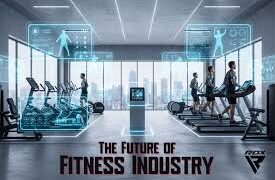When we discuss dentistry, we talk about processes that need to be extremely precise and efficient, as achieving impeccable results and long-lasting patient satisfaction depends on them.
As a result, CAD/CAM technology (Computer-Aided Design and Computer-Aided Manufacturing) has undoubtedly made a significant impact, transforming the way dental restorations are designed, made, and placed.
What is CAD/CAM Technology?
In the 21st century, with all the technology at our disposal, the cumbersome impressions with uncomfortable materials are a thing of the past. Instead, a state-of-the-art intraoral scanner captures a precise three-dimensional digital image of the patient’s mouth. That’s CAD/CAM.
Once the information is obtained, it is transferred to specialized design software, where a dentist or skilled dental technician creates a virtual replica of the required restoration, be it a crown, bridge, denture, or inlay.
Following this, the magic of CAD/CAM technology takes shape. A high-precision milling machine receives the digital design data and, with meticulous movements, carves the restoration from a solid block of biocompatible material, such as ceramic, zirconium, or composite resin.
The result is a customized prosthesis that perfectly fits the patient’s anatomy, offering unparalleled fit, comfort, and aesthetics that were unimaginable in earlier times.
Unbeatable Advantages of CAD/CAM Technology
The adoption of CAD/CAM technology in dentistry brings a wave of benefits for both professionals and patients, and we will discuss a few of them below.
Precision: The digital process eliminates distortion and errors inherent in traditional methods, ensuring restorations with a precise fit that optimizes masticatory function and prevents future problems.
Patient Comfort: Uncomfortable impressions with materials that can cause nausea or discomfort are eliminated. The intraoral scanner is fast, painless, and accurate, providing a more pleasant experience for the patient who will have the necessary information in just a few minutes.
Efficiency: Digitized design and manufacturing streamline the process of making restorations, significantly reducing time compared to conventional methods. This translates into shorter appointments, less inconvenience for the patient, and greater productivity for the dentist who can schedule more appointments and earn higher daily income.
Aesthetics in All Restorations: CAD/CAM restorations realistically recreate the color, translucency, and natural texture of teeth, achieving incomparable aesthetic results that harmonize with the patient’s smile.
Assured Biocompatibility: The materials used in CAD/CAM restorations are highly biocompatible, minimizing the risk of allergic reactions or rejection by the patient’s body. Although we must know that a low percentage could appear.
Exceptional Durability: CAD/CAM restorations are extremely resistant to wear and fractures, ensuring a long lifespan and reducing the need for future redoing.
Considerations of Disadvantages
While CAD/CAM technology offers a host of advantages, it is also important to consider some aspects that could be relevant:
Initial Investment: Implementing CAD/CAM technology requires an initial investment in specialized equipment and software, which can be a challenge for some dental offices.
Learning Curve: Mastering the use of design software and CAD/CAM milling machines requires training and practice by the dentist or dental technician.
Limitations with Some Materials: Certain materials, such as porcelain, may present greater complexity in processing with CAD/CAM technology.
CAD/CAM
Dental offices that can access this technology are those committed to updating and excellence in patient service, a clear example of this: Dental Solutions Algodones, modern and well-equipped dental clinics that value innovation and quality in the treatments they offer.
Dental offices that invest in CAD/CAM technology, such as Dental Del Rio Algodones, usually have specialized equipment, like state-of-the-art intraoral scanners to capture digital images of the patient’s teeth and gums.
They also have advanced dental design software that allows professionals to create precise digital models of dental restorations.
The Future of Dentistry Smiles with CAD/CAM
CAD/CAM technology has revolutionized dentistry, establishing itself as a fundamental pillar in modern dentistry. Its numerous advantages make it an invaluable tool for providing precise, efficient, aesthetic, and durable treatments, meeting patient expectations and raising the standard of dental care.
As technology continues to evolve and costs decrease, it is expected that CAD/CAM will become even more accessible to dental offices, democratizing access to its benefits and transforming smiles around the world.
In short, CAD/CAM technology represents a quantum leap in dentistry, marking the beginning of an era where precision, efficiency, and aesthetics combine to create radiant and lasting smiles.





























